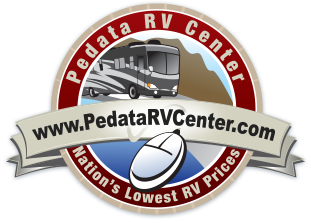Driving any new vehicle is an exciting moment. For that matter, driving a used vehicle that is new to you is also one of the best moments you will ever have on the road. Driving an RV, new or used, is doubly exciting as an RV is so much more than a car, truck, or mini-van. You will enjoy the room and the amazing amenities.
You will love the open view of the windshield, which allows a wondrous and scenic perspective as you drive. That said, safely driving an RV requires a few more skills and techniques in order to be proficient. Although it might seem intimidating to drive such a large vehicle, many people become proficient after a few practice sessions, and it usually comes down to knowing a few things about experience, visibility, and speed.
1. Practice
No one but no one gets into the driver’s seat of an RV for the first time and knows exactly what to do from the get go. In reality, it can be rather intimidating. However, any feelings of inexperience or clumsiness are actually to be expected.
Learning to drive an RV takes practice. The best way to practice is to find a large, empty parking lot and drive. For instance, whenever you are talking to someone about RV sales, you should ask if they have an empty lot where you can practice. In fact, it is quite common for RV dealers to offer this perk.
You should focus on learning how to maneuver your RV in a variety of different ways, including turning, parallel parking, and changing lanes. It is important to dedicate a few hours each day to ensure you truly understand how your RV handles.
2. Understanding speed
An RV represents a laid-back lifestyle that is meant for leisurely enjoying everything your travels have to offer. Your driving should reflect this perspective. Additionally, you have to understand that an RV has much more mass than a regular car or truck. Consequently, reaching top speed in your used RV will take much longer. More importantly, slowing down an RV for a tollbooth or a stoplight will require a lot more distance because the mass is too great for sudden stops.
Acceleration is likely not going to ever be much of a problem for you. However, slowing down requires you to begin braking within 10 car lengths, which represents 100 feet.
3. Corners
For any vehicle, the rear wheels follow the front wheels. This might sound obvious, but it is not. For instance, during a turn, the rear wheels will cut a corner and follow the front wheels. For a regular vehicle, this corner cutting is negligible and will not be noticed except in very narrow situations. However, if you cut a corner too sharply, a longer vehicle will end up driving over a sidewalk, potentially damaging property or hurting pedestrians.
Consequently, when turning, you should drive as far into the target turn lane as possible without crossing over into the oncoming lane. Basically, when you turn, you should complete the turn at the last moment. Doing so will cut a wide swath, and the rear wheels will follow the front ones while narrowly missing the sidewalk or curb. Additionally, you should take the turn as slowly as you deem necessary. Going slow will ensure that you are able to remain in control of your RV and come safely to a stop if you happen to misjudge the turn.
4. Mentality
Although an RV is primarily made for vacations and relaxation, driving one requires sharp attention to the road, other cars, and overpasses. Consequently, you should always allow plenty of wake-up time before you begin driving for the day. Additionally, you should not continue driving during the evening if the very visible recliner is calling your name.
Because eating can make you tired, you should wait a half hour after eating to drive, and you should always make sure to not allow conversations to distract you from the road. In terms of other riders, people should approach the RV as a bus or standard vehicle by remaining in their seats and not distracting the driving.
5. Position on the road
As anyone in RV sales will tell you, the best position on the road is the slow lane. Remaining in the slow lane results in two things. First, it allows others to drive at normal speeds. Although this courtesy is important, the second thing is that it helps the driver maintain a slow, safe mindset.
For instance, if you remain in the slow lane, you are less likely to take corners at a high speed or drive too fast for braking. Additionally, remaining in the right lane allows you the ability to pull over safely in case of an emergency. If you get a flat, for instance, maneuvering across three lanes of interstate can be dangerous.











